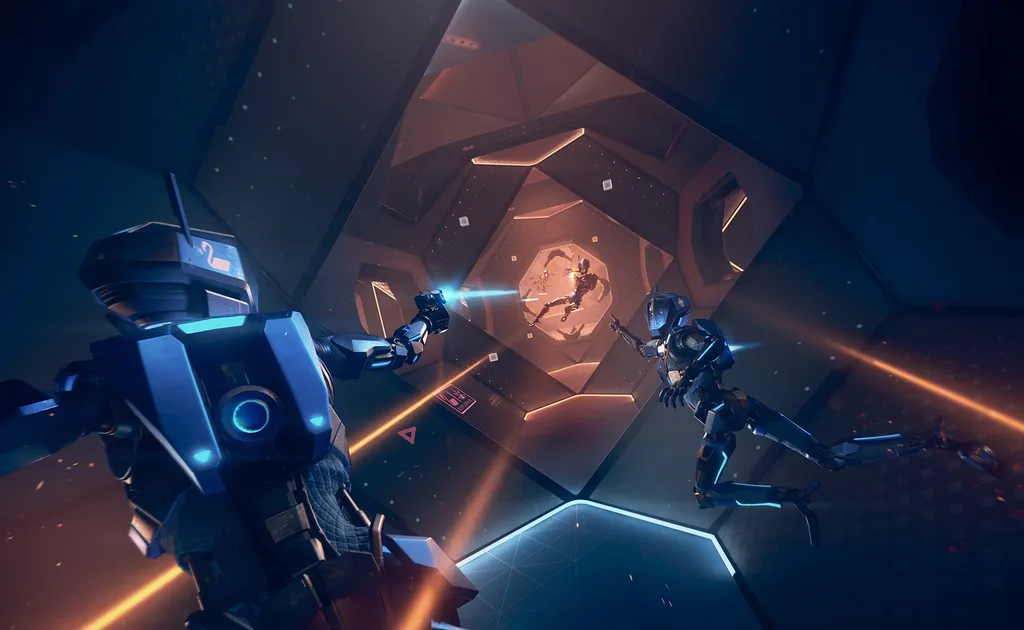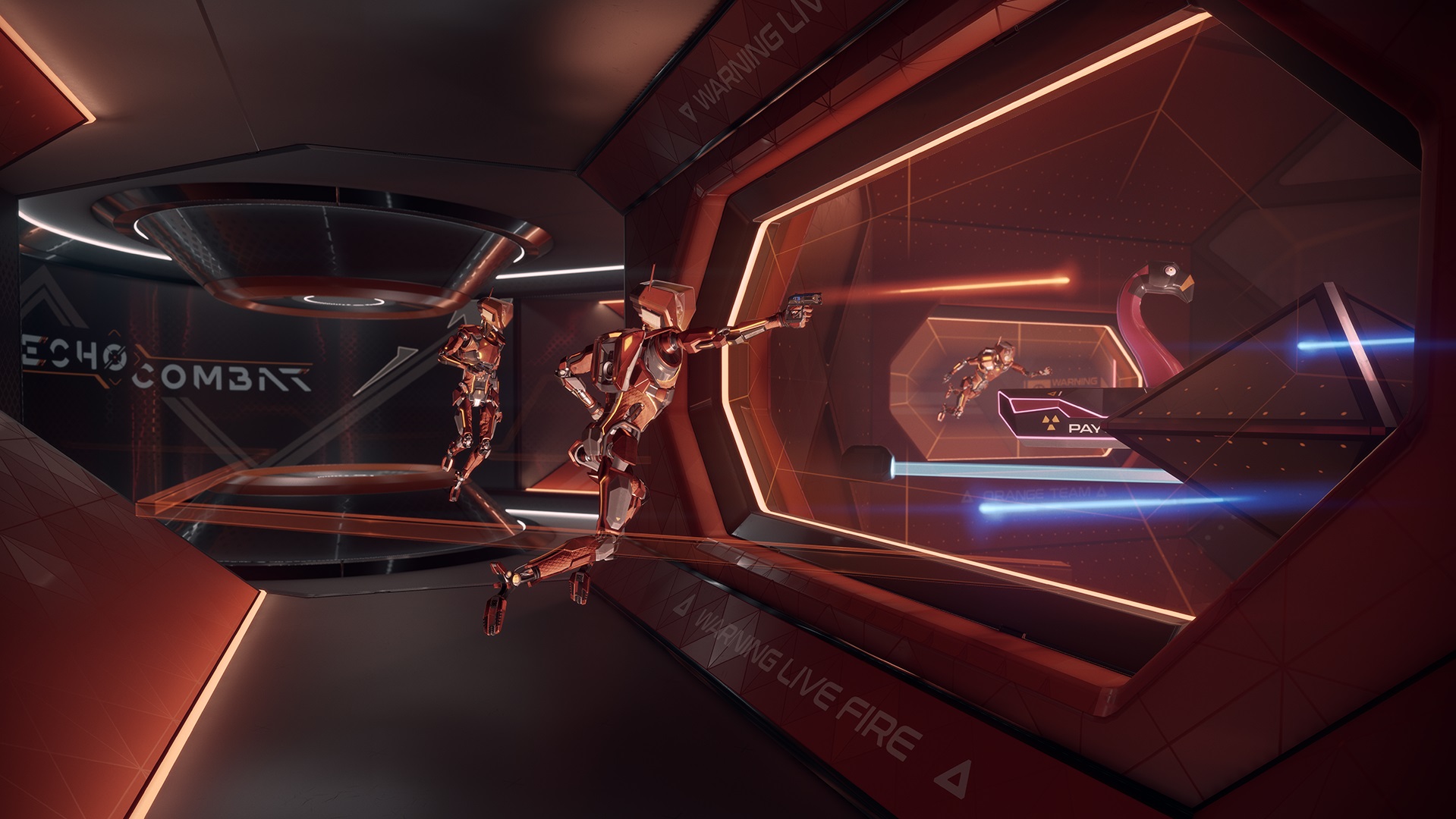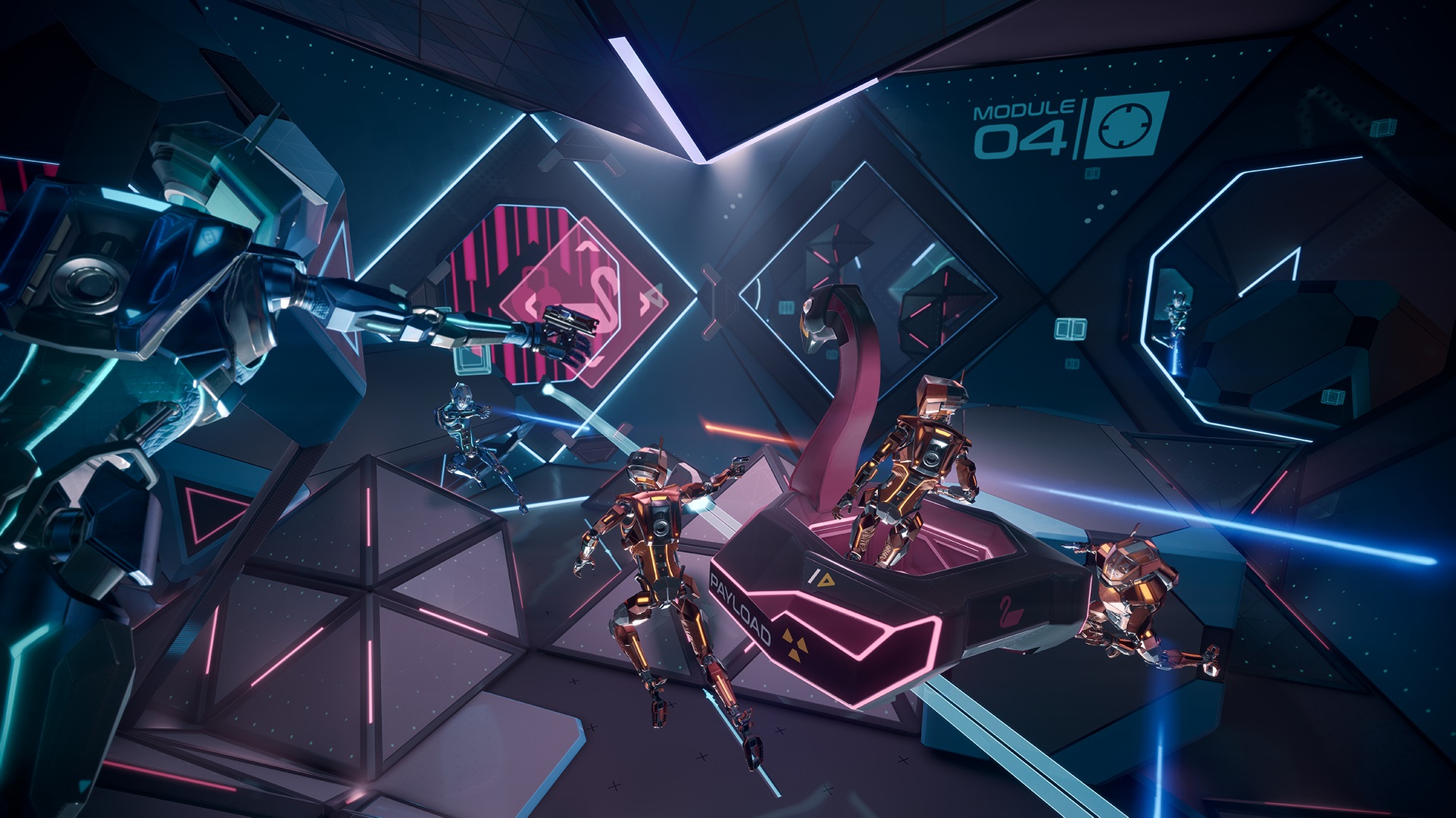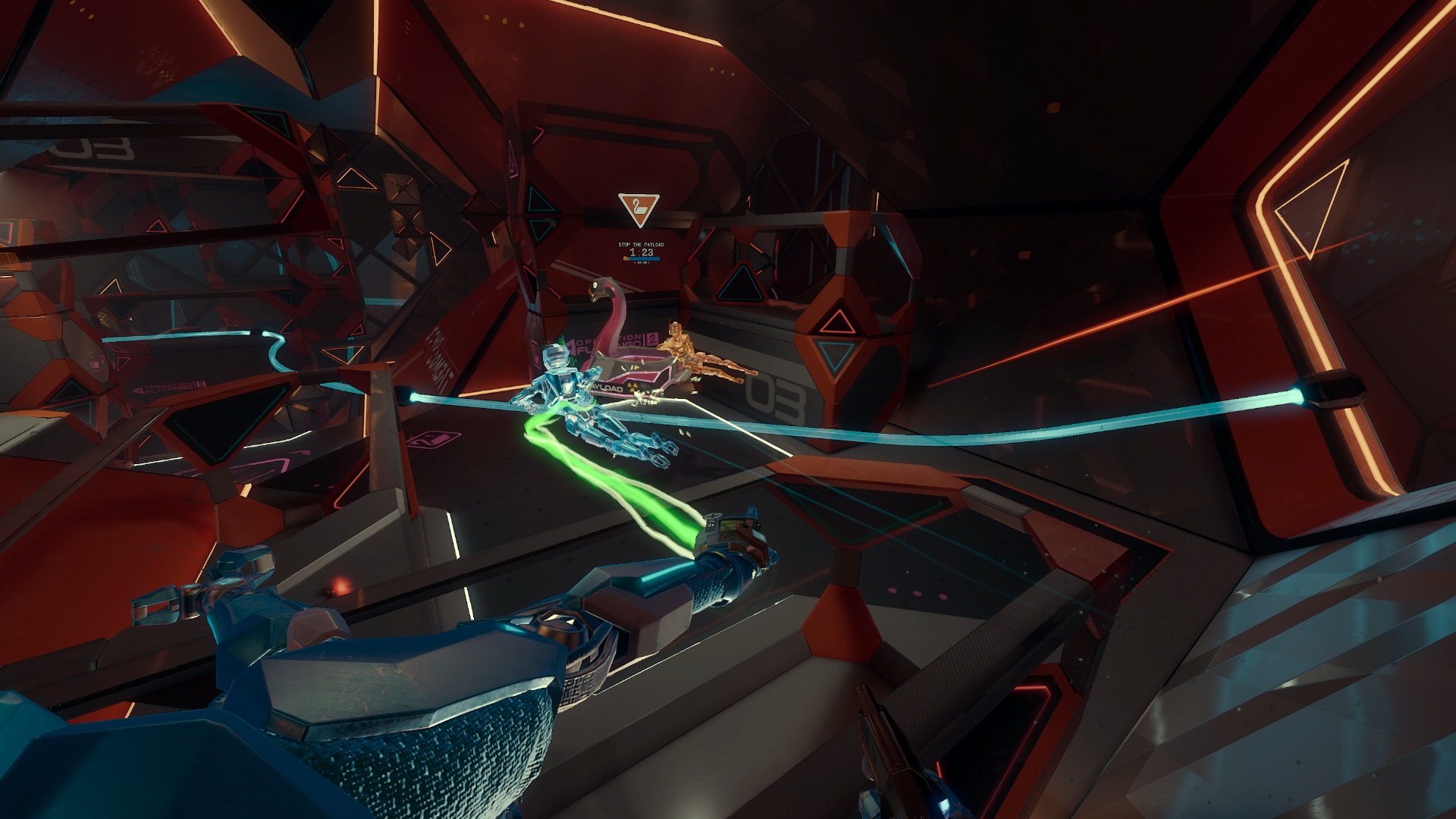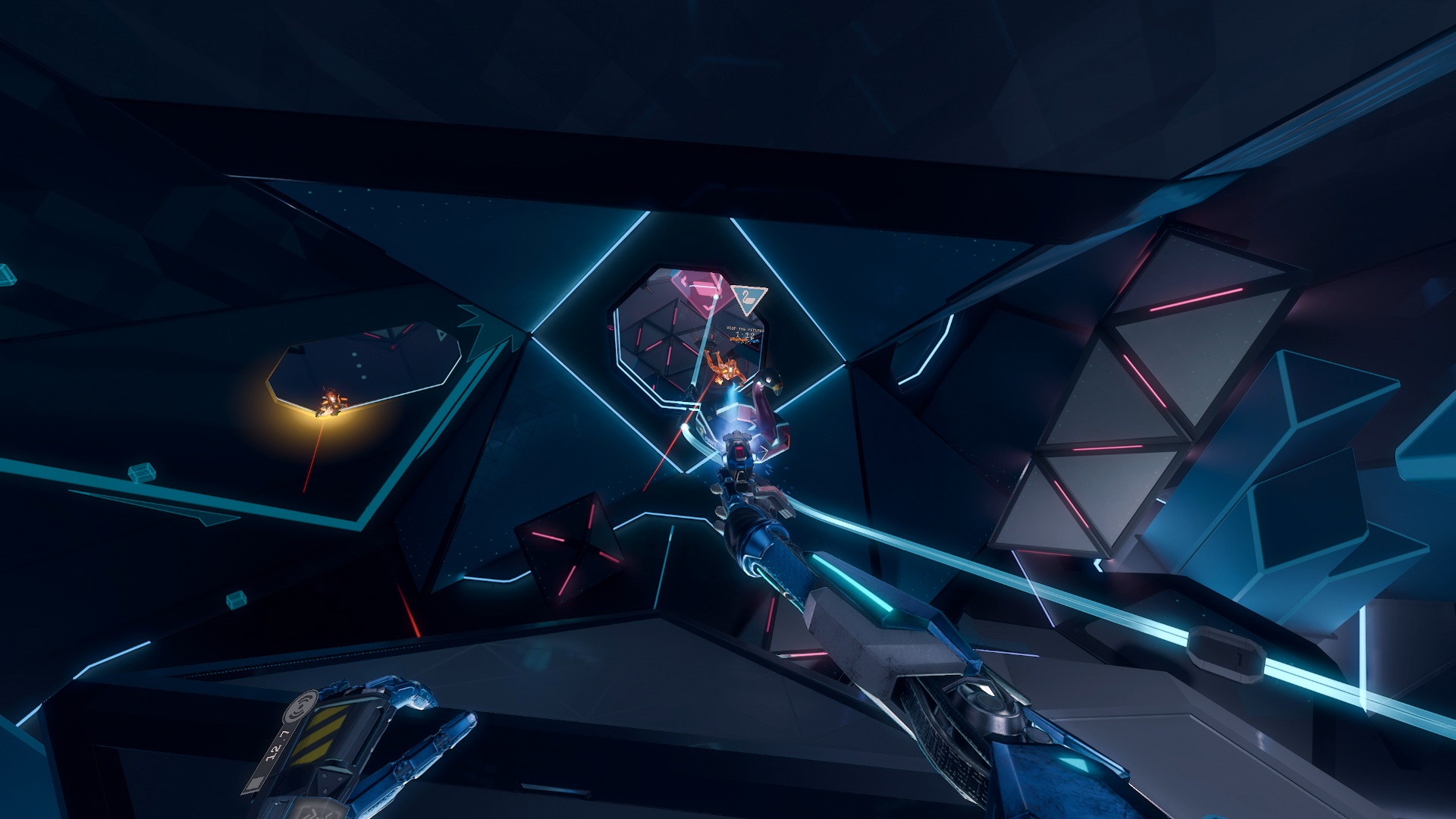This article was originally published in early June and is being republished now to coincide with the upcoming Open Beta weekend, which starts tomorrow, June 21st.
After playing lots of Echo Arena over the past year and being intimately familiar with the mechanics of Ready at Dawn’s groundbreaking zero-gravity movement system, I can still say that Echo Combat is about as complex of a shooter I’ve seen in VR. All my hours of Tron-like disc battles couldn’t prepare me for how deep and action-packed a match is in Echo Combat.
I consider that lack of familiarity I felt to be a very good thing. It proves that Ready at Dawn’s formula wasn’t a one-trick pony and can absolutely be adapted to new, exciting games.
Instead of throwing a disc at goals and playing keep away from the other team, you have different high-powered sci-fi guns and abilities to contend with and a payload to move across the map, just like in Blizzard’s insanely popular FPS Overwatch.
However, unlike Overwatch, you won’t pick a pre-defined hero with a list of abilities because you can instead customize your weapon choices before the match. Adjusting team composition with the right loadout and actually working together (and communicating) is incredibly important.
Since you’re shooting guns in Echo Combat it totally changes the dynamic of the game. For starters, every weapon has its own force feedback. In a zero-gravity environment each gunshot sends you backwards. The most basic laser pistol causes short spurts of movement, but the more powerful railgun-esque weapon rockets you back in big bursts.
Luckily you can hold onto things in the environment to anchor yourself before shooting, but then that makes you an easy target.
In addition to the different guns you have to pick from, each players also gets to choose an alternate weapon and an ability. Alternate weapons were either remote detonation discs that you could toss out and explore like disc-shaped grenades and static orbs that shocked opponents it touched. There are only a handful of abilities to pick from as well, like being able to drop a shield or heal your teammate.
Like Echo Arena, there is only one game mode in Echo Combat. Every match is split into two teams designated as either Attacking or Defending. The Attacking team must advance a swan-shaped payload across the map to the goal zone at the end. Each time a checkpoint is reached the timer resets and the spawn point is updated. The Defending team simply has to stop them from moving the payload.
Sounds a lot like Overwatch, right?
Perhaps more than anything else what I found the most difficult to get used to in my time with Echo Combat is being aware of my avatar’s legs in the VR space. With the Oculus Rift and Touch controllers I have full control over my head and hand movement, as well as orienting my body, but everything below my upper torso was hanging freely, including my legs. This means if I grab onto an entrance way or pillar to stabilize myself or take cover, sometimes my legs are still exposed, which led to a lot of people in matches flipping upside down and hanging down from the ceiling to hide their lower body.
It was a really surreal tactic that took a while for me to wrap my head around. Echo Combat is a VR game that not only encourages, but requires that you take full advantage of your 360-degree space at all times.
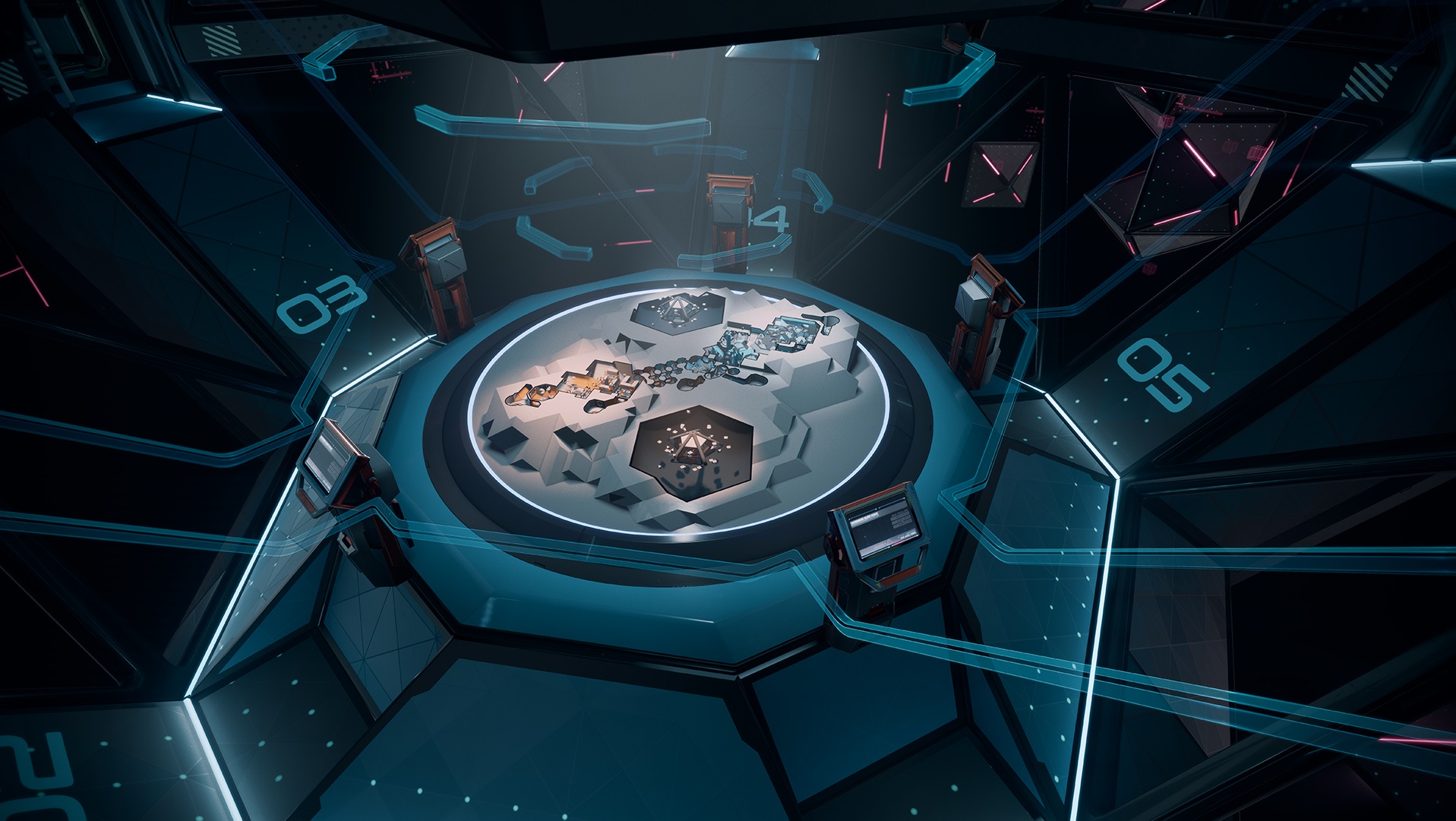
Just in the two brief matches I played I can already see entire team strategies unfolding. With a rapid fire pistol, long-range railgun, and short-range shotgun to pick from, you can cover all of your bases in the tense 3v3 matches. Or, if you’re so inclined, you could really buckle down with shields and shotguns to hold bottlenecks at many of the tight corridor areas of the map.
Since it’s not just variations in play style with a disc, but actually different weapons and team compositions, the ways in which a match can differ one game to the next are much more nuanced.
At first on the Attacking team I tried to just hold onto the payload and ride it to the next checkpoint, using its base as cover. But wait — this is a zero-G VR shooter, not a 2D shooter like Overwatch — that’s not going to work. Enemies easily flew up underneath me and shot me from below, or sniped my dangling legs below the payload.
When I played on defense, I tried camping the choke points, like the corridor you see up top in the featured image, but that didn’t work well either since the other team stacked shields up and down the corridor while riding the payload. The shields may only have a limited amount of HP before they can be destroyed, but if timed well you can stack them back-to-back with teammates.
Sneaking around the side of shields and blasting players in the head was extremely satisfying thanks to the game’s location-based damage multiplier. Headshots are certainly more satisfying when they do exponentially more damage than getting shot in the toe.
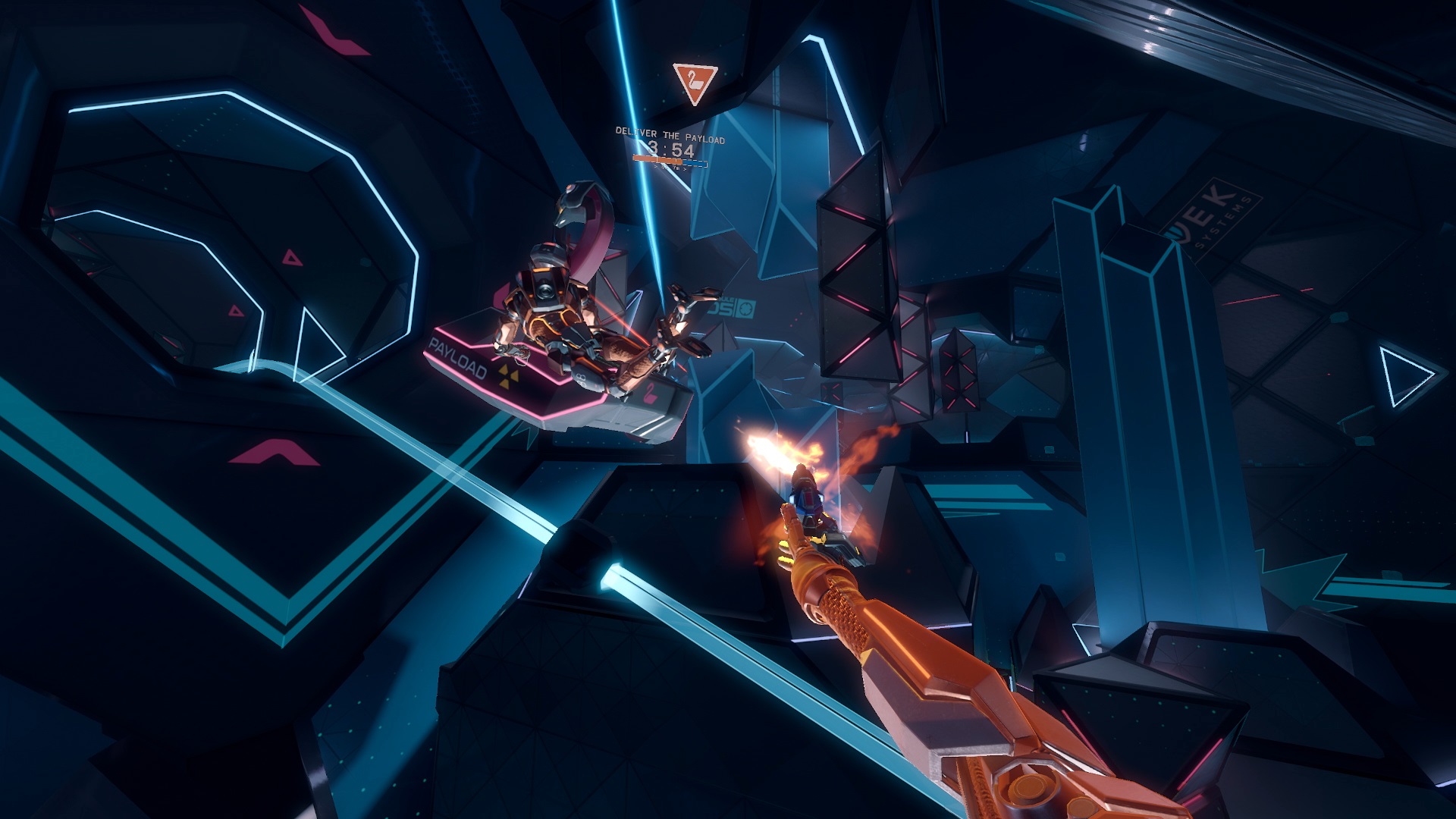
Echo Combat is as thrilling as it is creative. As a VR game we’ve seen many of its elements already, but not all of them put together into the same package like this so elegantly before. In some ways it reminds us of Space Junkies, another upcoming zero-G shooter, but with a personality all its own.
We will be going hands-on with Echo Combat again at E3 next week, but in the meantime let us know any questions or thoughts you have down in the comments below!
An Open Beta will for Echo Combat will begin on June 21, 2018, so stay tuned for more details on that.

